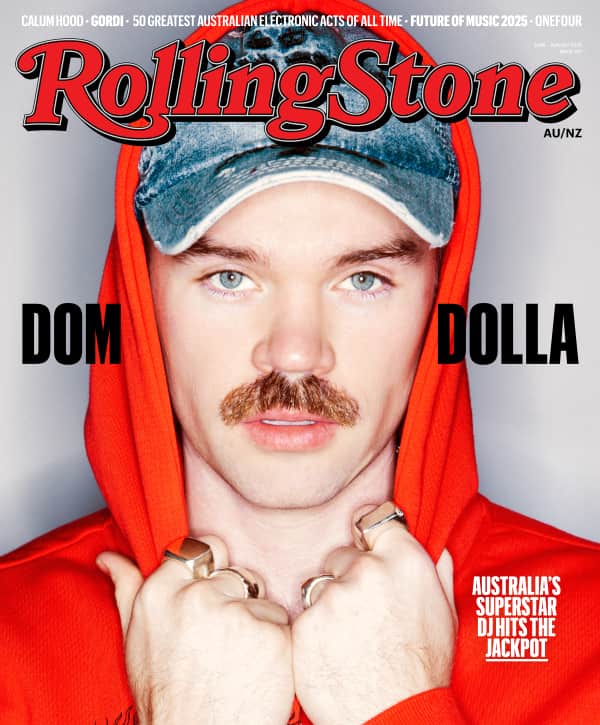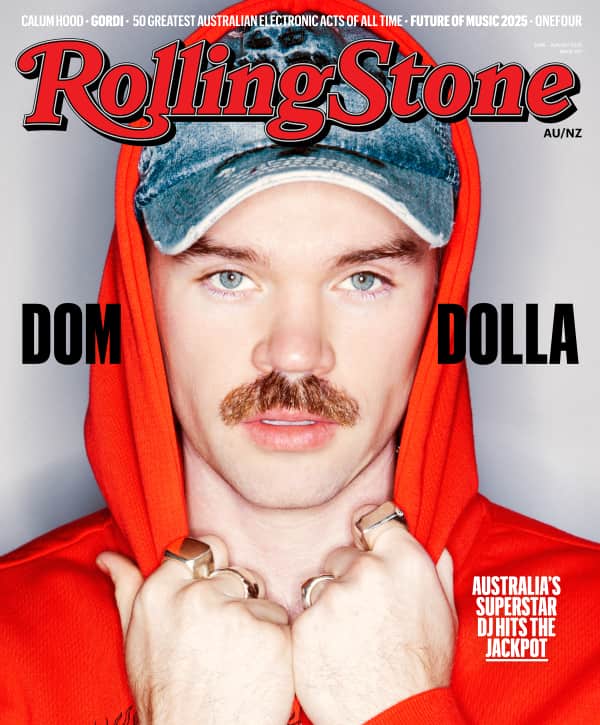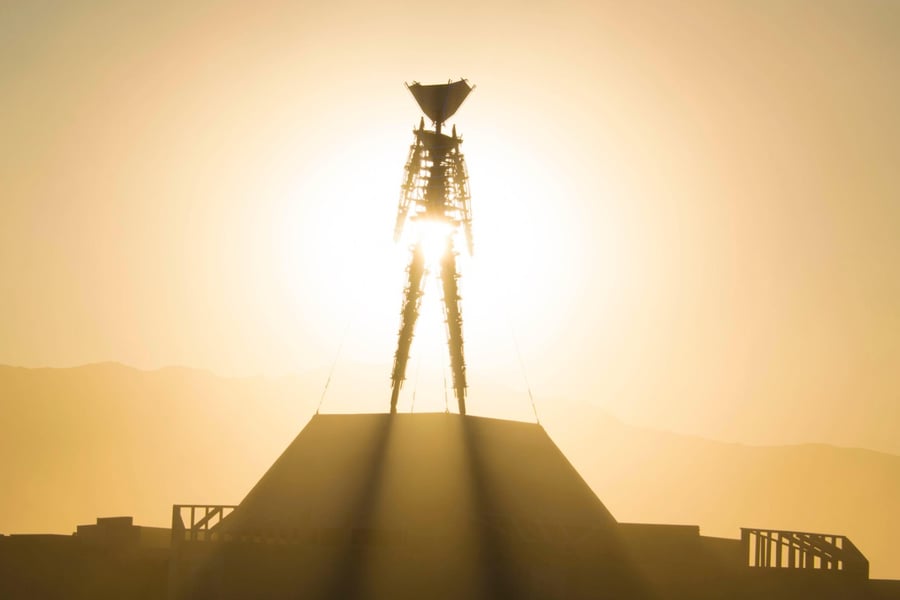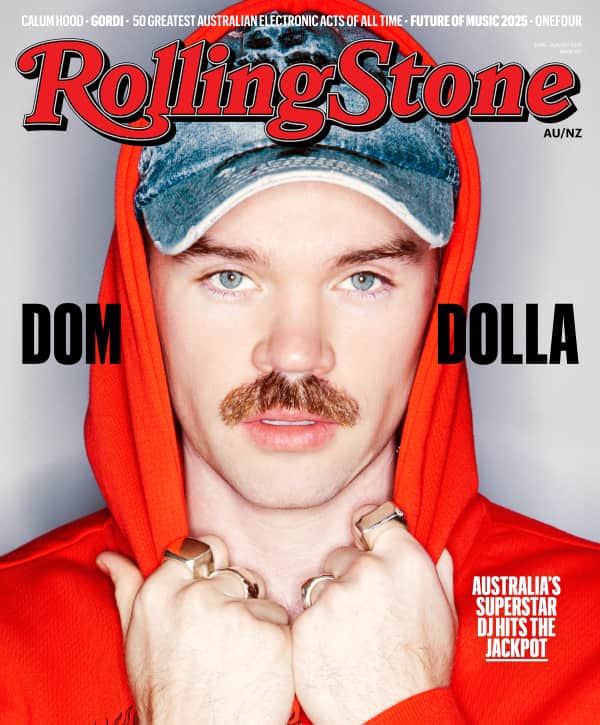The bad omens came early at this year’s Burning Man — the infamously wild, weeklong celebration of art, music, and unrestrained self-expression held at the end of every summer in Nevada’s Black Rock Desert — portending a particularly extra-ordinary burn.
During the first weekend of the 10-day event, when thousands of early burners were undertaking the formidable task of raising a fully functional city of roughly 80,000 citizens from a barren alkali flat in the wilderness 100 miles north of Reno, powerful gales leveled many of the city’s temporary structures, or prevented them from being built at all. When the wind finally let up on Sunday and the gates officially opened, burners began pouring into the city just as hammering rain began. The deluge repeated Monday and Tuesday, drenching the ordinarily waterless environment. “The playa was a lake,” says burner Erin Kindt, who describes mud that made the city’s desert-dust roads almost unwalkable and entirely undriveable. Those already inside the gate stayed close to camp out of necessity, while those still outside were stuck in their vehicles — some for up to 20 hours — in the infamous one-lane traffic jam into Black Rock City (BRC).
On Wednesday, the weather finally took a turn for the better, as the winds died down and the playa dried up. As if to providentially underline the metaphor of renewal and rebirth, a Salt Lake City woman at her first Burning Man started the day with inexplicable abdominal pains and finished it with a surprise: a healthy baby daughter born in her RV. Stirred by the resurgent spirit, and a sense of urgency, having “lost” a few days of the Burning Man they’d expected, the citizens of BRC began to party with a vengeance. “The rain finally stopped, and everyone finally landed,” Kindt says. “It turned into a wild, crazy, frantic party, with sunsets and sunrises full of people raging to make the most of what Burning Man days we had left.”
The frenetic energy carried on into Saturday night, the climax of the week, the event whence Burning Man gets its name, when the entire city gathers to watch a towering effigy go up in flames. But as fireworks illuminated the desert sky, and fire engulfed the figure, at least one BRC citizen was not present: Vadim Kruglov. While the rest of Burning Man celebrated, Kruglov lay prostrate on the ground at a faraway campsite in a comparatively desolate section of Black Rock City, his throat slashed, as a puddle of blood congealed around his lifeless body.
What exactly happened and why remain stubborn mysteries for the moment, and we may never learn the full picture of what transpired. The investigation is ongoing, and it’s unclear what progress has been made toward apprehending a suspect. The Pershing County Sheriff’s Dept. declined to confirm to Rolling Stone if any suspects had been identified, or make any statement at all beyond its press releases. Organizers of the event also declined to comment past their existing public statements. “Burning Man Project is doing everything we can to assist the Sheriff’s investigation so the perpetrator can be caught and brought to justice,” the organizers said. “This includes our intent for a coordinated donation to the Secret Witness program, which offers rewards for more information that contributes to law enforcement’s investigation.” The investigation has been hampered by peculiar challenges, though, perhaps none greater than the fact that the entire city in which the crime occurred has vanished.
If confirmed as such, Kruglov’s will be the only murder to happen in Black Rock City in its three and a half decades of existence. Death and tragedy are, unfortunately, rare but regular parts of Burning Man, and violence is not completely absent. In 2024, two people were arrested on charges of assault with a deadly weapon, and three more on battery charges. Sexual assault is, unfortunately, an issue the Burning Man community is forced to deal with every year. But violence of this kind — murder — is unheard of in Black Rock City.
Burning Man is dangerous — that’s part of the challenge, and, as I’ve found over the course of nearly half a dozen burns, part of the allure. Dehydration, heat stroke, bike wrecks, a bad trip; these are just a few of the hazards a burner may face in Black Rock City. But there’s a social contract underpinning that danger that says that burners look out for one another. Part of the reason at Burning Man you can to lose your friends and get lost in a whiteout and have a grand adventure with strangers that ends with you sleeping in the cuddle puddle at a camp you’ve never heard of is because there’s a level of trust and regard for everyone’s safety built into the culture. Safety isn’t a burner’s top concern, or even the second most important, but it’s up there: “Safety third!” as burners are fond of saying. An act of violence so heinous as that which took Kruglov’s life marks a sharp break in that social contract unlike many, or any, other transgressions could.
Love Music?
Get your daily dose of everything happening in Australian/New Zealand music and globally.
Though I was unable to go to Burning Man this year, I learned through conversations with friends and my reporting that the impact of the homicide was felt almost immediately. When the news first spread through the Burning Man rumor mill, the first reaction seemed to be confusion — rumors there are supposed to be about whether Daft Punk is playing at the trash fence or a major art piece burn has been rescheduled, not a grisly death. But in the aftermath of the tragedy, some burners are looking back on that last weekend of the celebration with anxiety and even fear. The lingering effects of an incident so vile occurring within Burning man’s sweet bubble are bound to affect people for a long time.
BLACK ROCK CITY IS LAID OUT in a grid shaped like a horseshoe, with the eponymous Man at its center. There’s a large section of BRC near the top of the curve called “open camping” where space is allotted on a first-come-first-serve basis, rather than through lots assigned in advance, as in the rest of BRC. The free-for-all results in a neighborhood with a more disordered, organic layout than elsewhere in town. It’s also relatively quiet compared to further down near the Man. The long streets that run the length of the shoe are each given a letter A through L, while the shorter streets that cut across the width are assigned numbers like in a clock, from 2:00 to 10:00. The tent in which Krulgov’s body was found was located near 8:30 & I, in open camping.
Kruglov, 37, was a Russian citizen born and raised in Omsk, a city of one million in southwestern Siberia. He moved to the United States in 2016 and, according to authorities, had made a home in Washington State. Though Kruglov studied engineering and worked in IT, he was an artist too. “He wanted to give love,” Kruglov’s friend and collaborator Roman Lurye reportedly told a Russian-language news site. This was Kruglov’s first burn and he leapt into Burning Man with a heedless passion rare among first-time burners. According to an Instagram post from his friend Sofiia Shcherbakova, he spearheaded his camp’s art project on the playa, and even came in early to help put the city together. The effusively loving affect that his friends’ describe is reflected in the sculpture he installed on the playa — slats of gold and white splayed out like a headdress, framing a heart with a mirror inside. In an Instagram caption (translated from Russian) posted within a day or so of Kruglov’s death, Lurye referred to the piece as “a big heart . . . that seems to have taken these wounds, made them part of art and closed the circle of experience.”
When he first heard the news of a homicide at Burning Man, on Saturday night after the Man Burn, longtime burner Tim LaVelle was dancing to DJ CRSTO De La Selva at the PlayAlchemist camp, whose pyramid is a prominent feature of the BRC skyline. “A little after midnight, I distinctly remember overhearing the word ‘homicide,’” LaVelle says. “It ran right through that pyramid like an electric current and everybody was tuned into it. But I think everybody thought, ‘There’s no way this is real.’ It wasn’t until the next morning that it really hit home.”
THE LAST BIG EVENT OF BURNING MAN is not yet another bacchanalia, but the immolation on Sunday at sundown of the Temple, an important and always appropriately ornate structure on the playa, which burners visit to pray, meditate, and reflect. When fire consumes the Temple it seals that year’s burn with a tinge of solemnity. This year, however, for the people camped near 8:30 and I, Sunday night was also permeated by another set of far less welcome emotions: anxiety and fear.
There are not many taboos at Burning Man, so those that persist at the otherwise staunchly anarchic event do so for a reason. It is forbidden, for example, to discard garbage on the ground — even debris as seemingly harmless as cigarette ash — due to the event’s “leave no trace” ethos. And it is generally frowned upon to ask other burners for water. Radical self-reliance is a key tenet of Burning Man. Though on occasion even an experienced burner may run out and depend on fellow revelers in a pinch, if someone is going around Burning Man asking for water it’s an indication that something has gone very wrong.
Thus, when two disheveled men barged into one camp on Sunday, the burners who encountered the thirsty strangers were understandably uneasy. Though it was not yet clear that there had been a homicide the night before, they’d heard about the death of a then-unidentified burner and there had been a notable and ongoing police presence in their neighborhood from Saturday night on. It was enough to raise the anxiety level in camp, which the addition of two sketchy strangers — completely innocent though they might have been — certainly did not help. “[They were] definitely off-putting characters that we didn’t want hanging around our camp, who seemed like a liability and like somebody we wanted to have distance from us,” says one long-time burner who asked to remain anonymous.
It was late in the afternoon when two middle-aged men, both around six feet tall, one Black and one white, arrived at their camp, the burners say. The interaction felt off from the start. The men entered not from the street but from the side, through parked cars and neighboring camps. The white one with scraggly, shoulder-length hair skipped pleasantries and asked with patent urgency for water. He didn’t have a vessel so the burners gifted him a jug, but he continued to linger. The Black one wore skinny jeans and sunglasses, which he kept urging the campers to try on. He casually mentioned that he’d been in a fight earlier; he’d been jumped by a group of guys, he said, and had to defend himself. Uninvited, he took a seat on the couch to try ham-fisted pickup lines on one of the women, though he was too out of it to carry on a conversation. “Do you want to fall in love with me,” one of the women remembers him muttering, without looking in her direction. “She tried responding to him and he was just not connecting the dots,” says another woman who observed the interaction. “We didn’t necessarily see anything, but you could tell they were on some sort of substance.”
Three people present described the manner of the two strangers as detached and off-putting, and said their story just did not add up. Eventually, two men from the camp politely but firmly ushered the interlopers out. “Most people who wander into your camp at Burning Man are looking to make friends. People want to get to know you,” one of the burners from the camp tells Rolling Stone. “These guys seemed out of it. That’s just not the sort of people you want to have hang out at your camp.”
Late that night, long after the Temple Burn, some attendees had gone back out for one last night of partying on the playa, while others hung out in the relative quiet of open camping, with the ever-present thump of EDM far off in the distance.
Shortly after midnight, the burners remember, their serenity was interrupted by a group of law enforcement officers who entered the camp to ask questions. They presented them with two photographs, each featuring one of the strangers from earlier in the day. The burners say the cops told them they were investigating Saturday night’s homicide and the photographs were potential suspects.
“We were like, ‘Oh my gosh! Yeah, we’ve seen them,” one of the burners tells Rolling Stone. “They were at our camp earlier today!’”
The two men may have been completely innocent. Nothing about their interaction with the burners at camp tied them directly or indirectly to Saturday night’s homicide. But the police asked so the burners answered, recounting all they could about the strange interaction. They offered up the water jug that one of the men had drunk from as evidence, but, they say, the officers weren’t interested. About 20 minutes after the cops left, two rangers — Burning Man volunteers who operate like a cross between a paramedic and a peace officer — arrived with more pictures of the same men. They described the men as “persons of interest.” The rangers poked around camp with flashlights, striking up conversations with people still awake, and left.
On Wednesday, Sept. 3, Kruglov’s friend Sofiia Shcherbakova posted on Instagram that he was missing. “Last seen at the Burning Man festival 4 days ago,” she wrote. “He has not been in contact since. His tent and belongings were left at camp, but he never returned.” The next day, authorities announced that he was dead.
WITH THE BENEFIT OF HINDSIGHT, one gets the impression that the authorities did not immediately grasp the full implications of what happened at Burning Man in its final weekend. The strange men from the photographs may have only been witnesses to a possible homicide, or they may have had nothing to do with it at all. But someone slashed Vadim Kruglov’s throat at Burning Man on the evening of Aug. 30, which is to say that, on Aug. 31, there was likely a killer, or killers, on the loose in Black Rock City. Thankfully, BRC didn’t experience any further outbreaks of violence, but it was a potentially dangerous situation, and one that would seem to call for a temporary but unambiguous shift in behavioral norms. If, as law enforcement officers told the burners I spoke with, suspects had been identified by Sunday evening, perhaps the authorities feared publicizing the fact would compromise the investigation. But neglecting to spread the word to the community might also cause a group of well-intended burners to unknowingly invite into camp a desperate person who had killed someone 24 hours earlier.
Inevitably, within moments of the effigy of the Man crashing to the ground Saturday night, a few burners begin departing from Black Rock City. What starts as a tiny queue grows hour by hour on Sunday and Monday into a vast migration of vehicles caked in gray playa dust and packed with exhausted humans—the whole phenomenon is an experience unto itself known in Burning Man-speak as “exodus.”
There is a single two-lane road into and out of Black Rock City, which terminates at the Burning Man gate. To make for a more energy efficient and less nerve-racking exodus experience, once the line grows large enough, pulsing begins, wherein vehicles move in packs rather than lurch along at 5 mph. One pack moves several miles down the road while the pack behind it sits and waits. When the first pack reaches the next stopping point the pack behind it follows. People use the opportunity to turn their car off, get out and walk around, dance, toss a frisbee, and share snacks with the people in the next car. It would be difficult to design more favorable conditions in which to implement an easy, unobtrusive, and effective law enforcement check point to search for, say, a murder suspect. And yet, I can find no evidence that any such checkpoint — any checkpoint at all — was put in place. When asked specifically about this, police once again declined to comment.
The apparent lack of checkpoints was just one aspect of a law enforcement response that many found lacking. If there were suspects identified, law enforcement made no public announcement of the fact, though a suspected murderer could certainly pose a threat to public safety. Nor, it appears, did law enforcement advise people against welcoming strangers into camp, or giving strangers rides during exodus — an extremely common occurrence normally that, under the circumstances, would certainly make it easier for someone hiding from the cops to skip town.
Where the official response to this tragedy was lacking, the Burning Man community stepped in to fill the gap. Burners from the camp that had the unsettling interaction with the possible suspects ultimately spread the word to their camp and others in the vicinity to consider closing camp for the rest of the burn, to not be as reflexively welcoming to strangers as as they would normally be, and not give rides to hitchhikers when leaving BRC. While the official, and confidential, investigation continues, Kruglov’s friend Shcherbakova has been a tenacious advocate for bringing those responsible to justice and herself has become a kind of clearinghouse for the community’s own public investigation. She has also launched a GoFundMe to help cover the various unexpected costs incurred by Kruglov’s family. (She did not respond to a request for an interview.)
It is inevitable that an act of violence of the kind that took Vadim Kruglov’s life will leave a lasting impact on Burning Man and the burner community, in one way or another. Whether the nature of that impact is grounded in fear and paranoia or in inclusivity and the spirit of mutual aid is ultimately up to the community, and how it responds to this moment.
“I take the long view on this,” says Tim LaVelle. “A life was born, a life was taken. In the grand scheme of things, I still think the Black rock city is safer than pretty much any other place on earth.” If undue focus is placed on this tragedy — in other words, on Kruglov’s horrific death rather than his, by all appearances, radiant life — and newcomers, the lifeblood of Burning man, are scared away, it could have a serious and deleterious impact on the community. Overall, however, the burners I spoke to were confident in Burning Man to make it through this.
“Burning man is the tip of the spear of art and culture,” LaVelle says, “and the thing that makes that so important is that the community is so strong.”
From Rolling Stone US



































